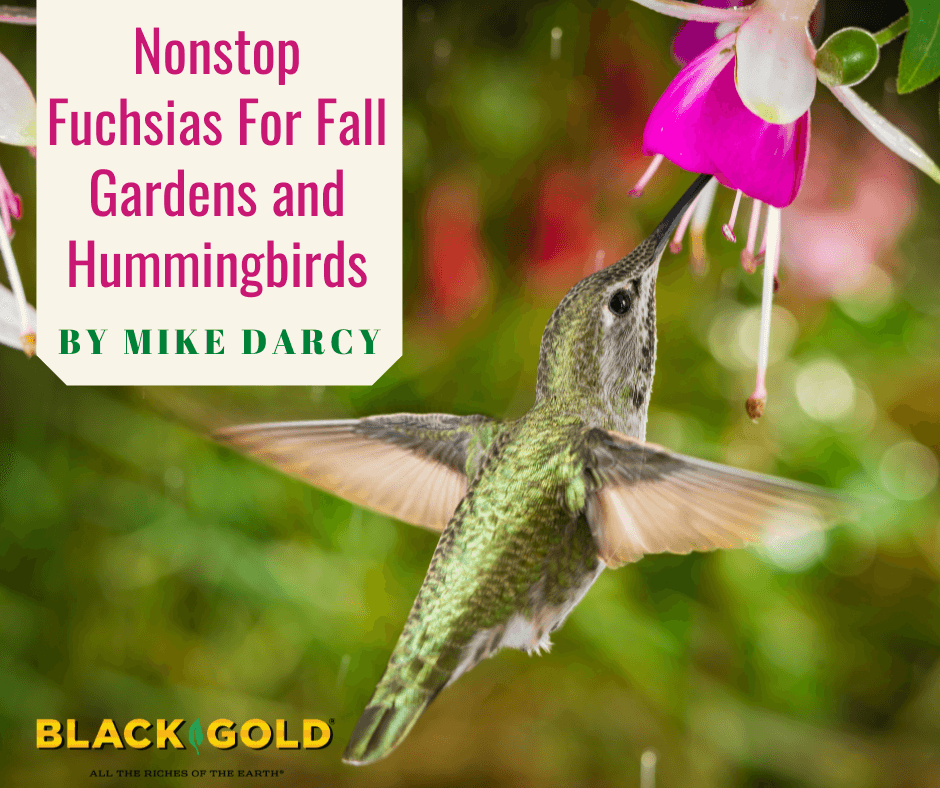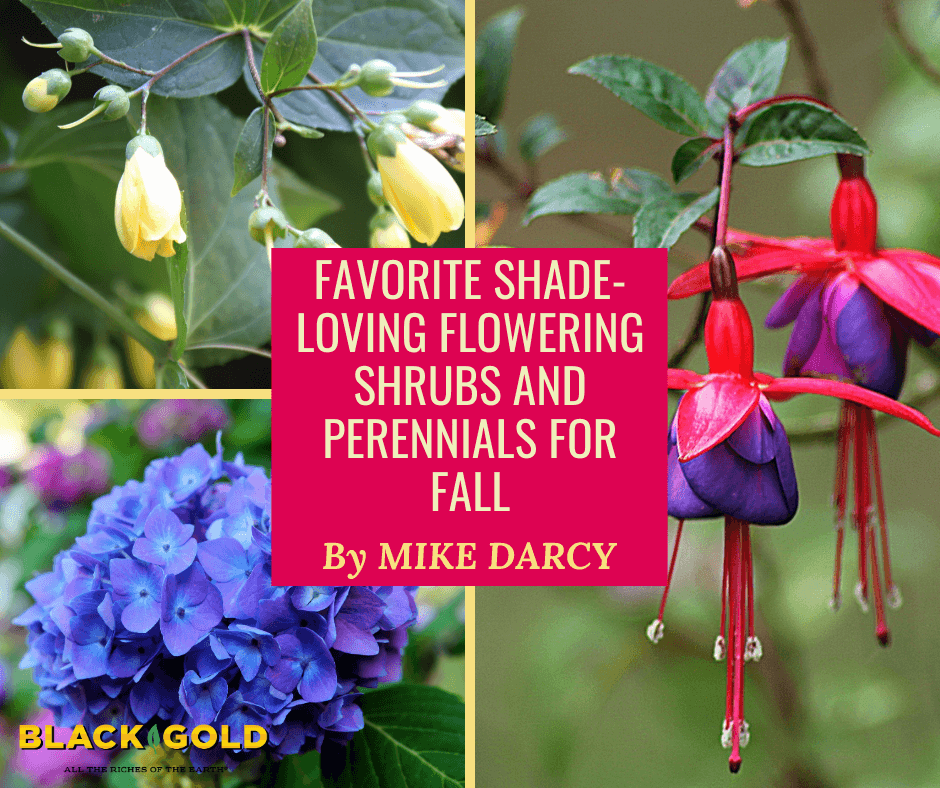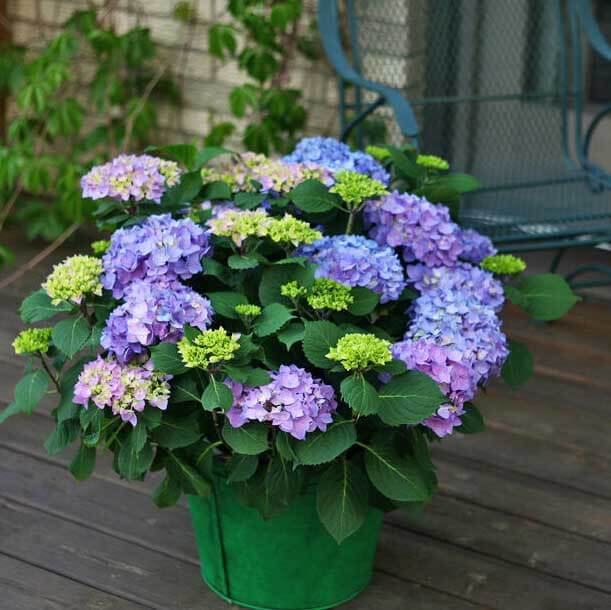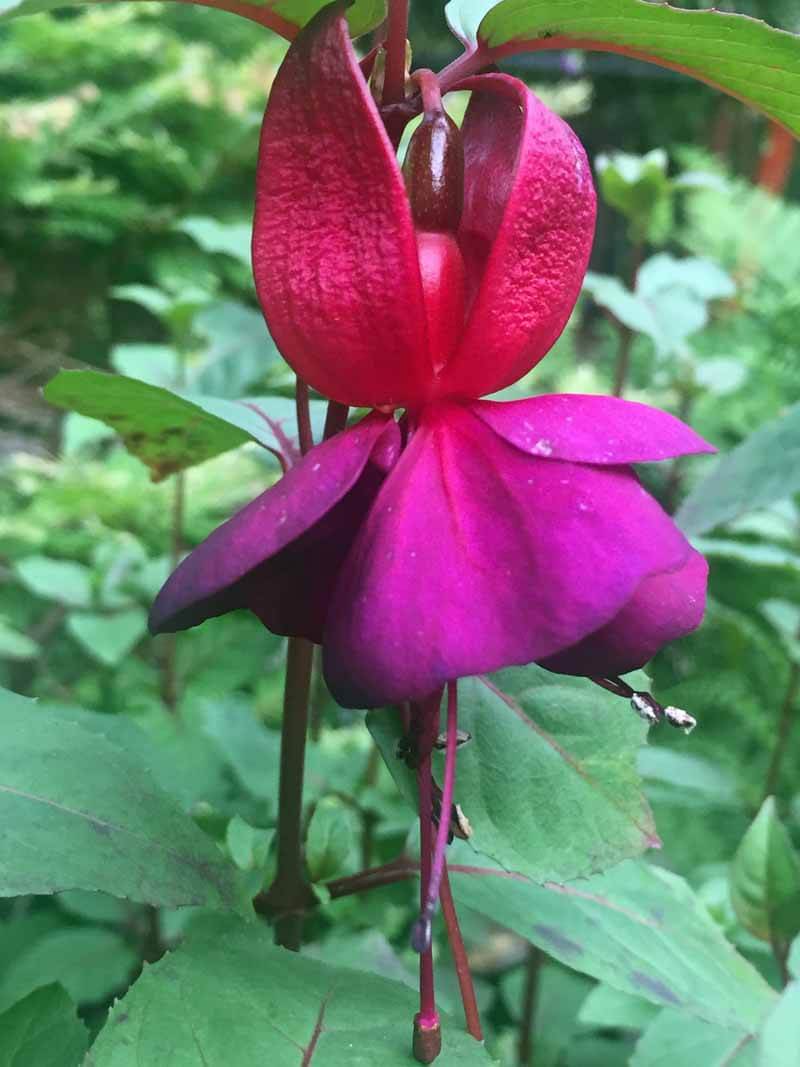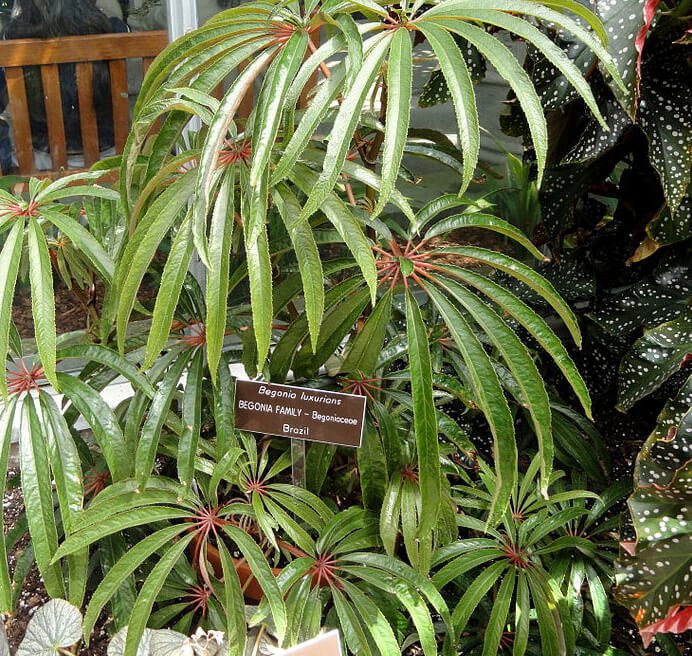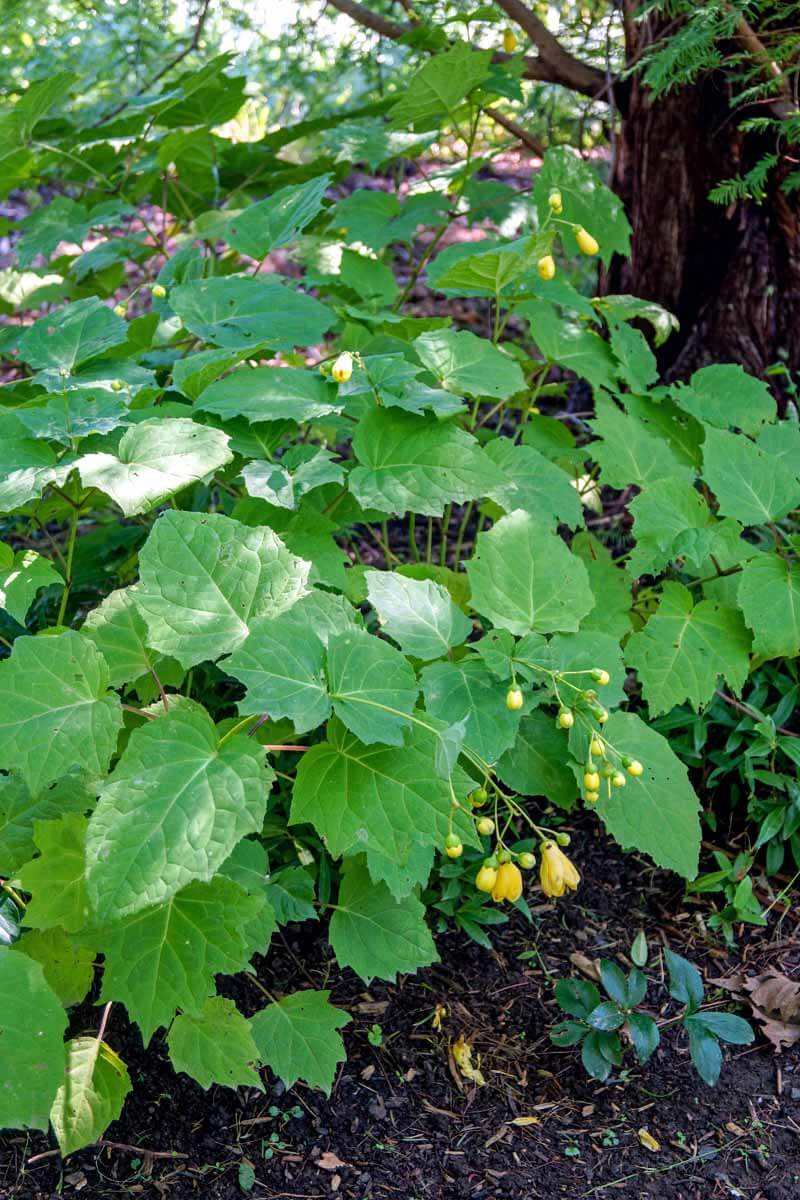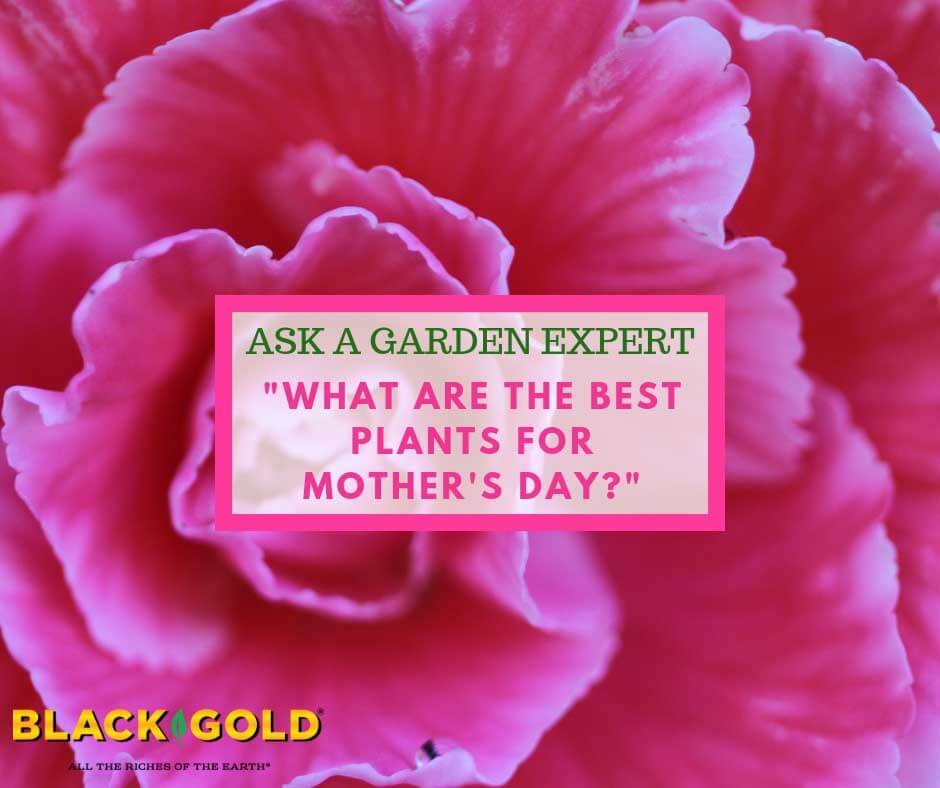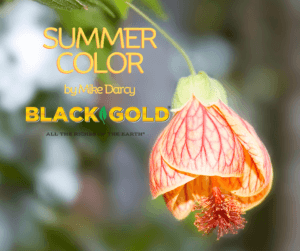
With the cool and rainy wet spring that we had here in the Pacific Northwest, most plants seemed to be about two weeks behind what would have been their ‘normal’ schedule. The weather delayed many gardeners from doing what would be some of their early spring chores. Not only was the weather not conducive for working in the garden, but the soil was too wet and muddy from all the rain. Then in May, spring arrived with warm sunny days, and it was as if plants exploded with growth and bloom. Suddenly plants were no longer two weeks behind schedule but were on schedule.

As I walk around my own garden, as well as other gardens that I have recently visited, I am in awe of all the color that I see. Most gardeners always have room for another plant and the following are some of my favorites for summer color. Many of the plants that I use for color are in containers and I have found that adding a mulch across the top of the soil is a benefit to helping the plants thrive. Black Gold Natural & Organic Garden Compost Blend is an ideal mulch to help retain moisture. Another option is Black Gold Natural & Organic Just Coir which has excellent water holding capacity.
Hardy fuchsias would have to be near the top of the list for summer color. There is such a wide variety to choose from with size and color of the flower and the growth habit of the plant. Some will get quite tall, often up to six feet or more in one season, while the height of many stays in a three-foot range. Some varieties will even hug the ground and grow as a ground cover. Plant tags will often say sun to shade exposure, I have found they do best with some protection from the hot afternoon sun. One of my favorites is Fuchsia ‘Debron’s Smokey Blues’.
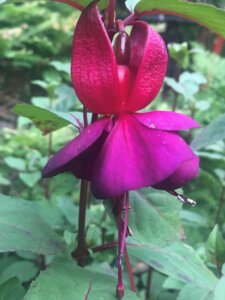
The flowers on Abutilon ‘Red Tiger’ do not look real but look like a fine stained glass art piece. This is a shrub and in a mild northwest winter, it will survive. A large plant in full bloom is stunning.
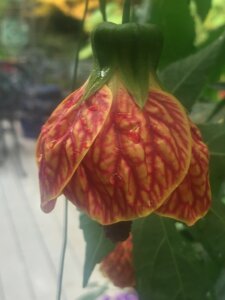
If there was ever a plant that was a work horse for blooming, I think it would have to be the dahlia. Most dahlias will begin flowering in June and there will be non-stop bloom until frost. The color range is vast and there is almost every color except blue. The flowers are also variable in their shape as is evident by the photos. These pictures were taken last summer in the trial garden of the Portland, (OR), Dahlia Society which is located on the ground of Swan Island Dahlias in Canby, OR. These photos give a good example of the wide range of color and shape of flowers. Dahlias also make excellent cut flowers.
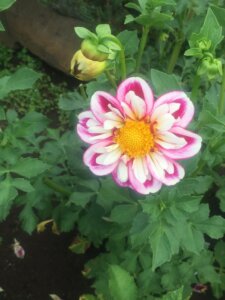
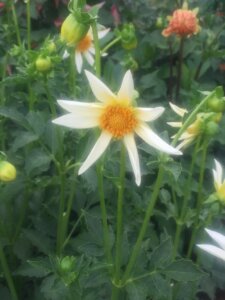
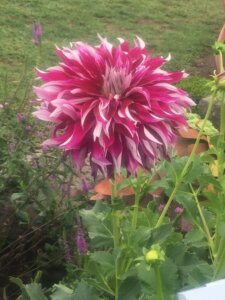
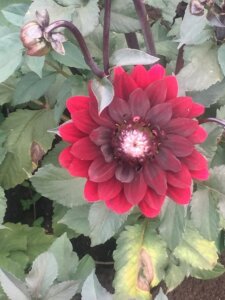
Our summer deck would not be complete without several containers of Salvia. Keep the flower stems picked when the blooms are gone, and many will bloom throughout the summer. Two of my favorites are Salvia ‘Black & Blue’ and Salvia ‘Amistad’. The flowers on ‘Black & Blue’ tend to be cobalt blue and ‘Amistad’ has flowers that are deep purple. Both are magnets for butterflies and hummingbirds,
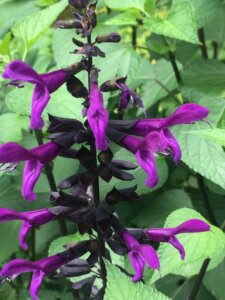
Sometimes, I think it is fun to grow plants that are known not to be winter hardy, but nevertheless will perform well during the summer. The Princess Flower, (Tibouchina), is one such flower. It will bloom with purple flowers all summer and into the fall. It will not survive our winters outside and so mentally; I consider it an annual. It is fast growing and flowering can be profuse. Excellent for growing in a container.
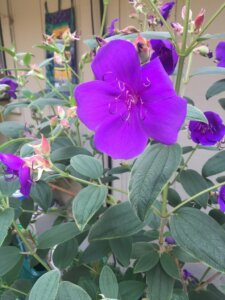
I realize that I have barely touched the list of plants for summer color, but the above-mentioned ones should all be readily available and easy to grow. Perhaps one is new to you, and you will give it a try. Most gardeners are always trying something new. Who knows, it might just become a favorite!


